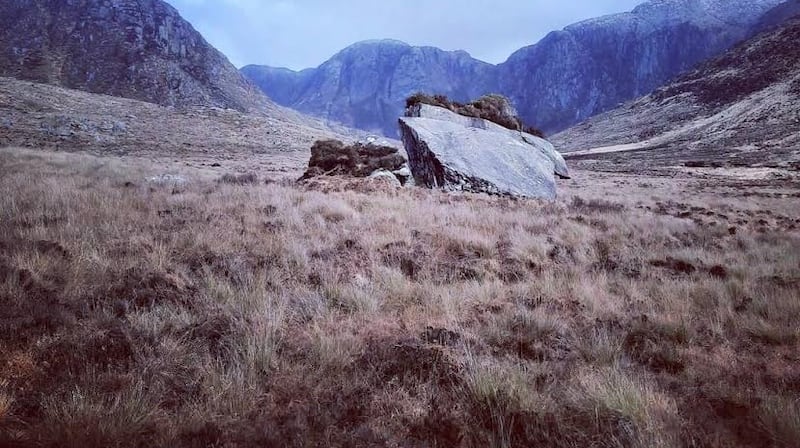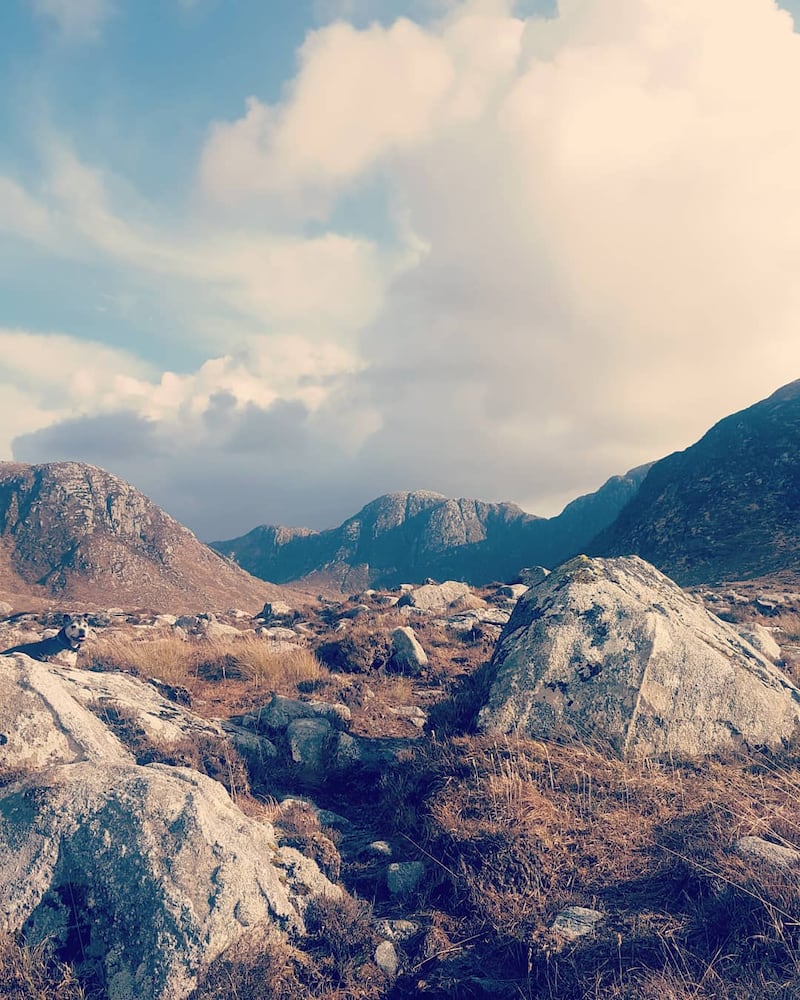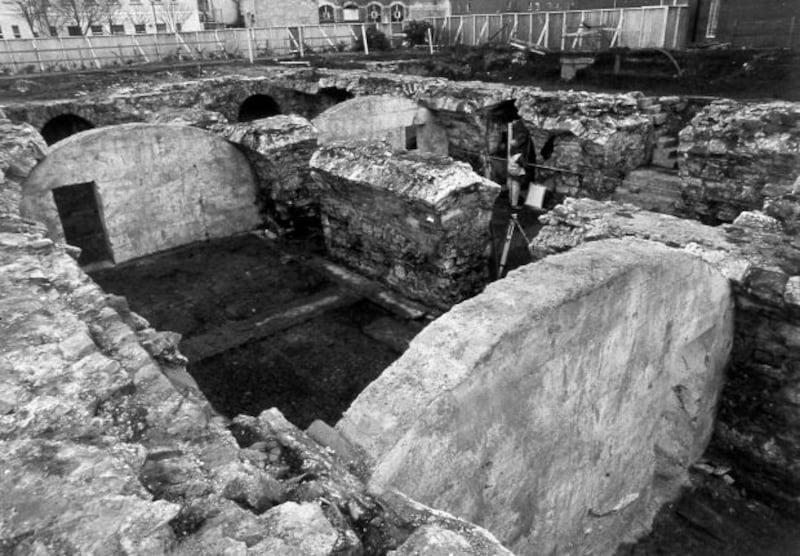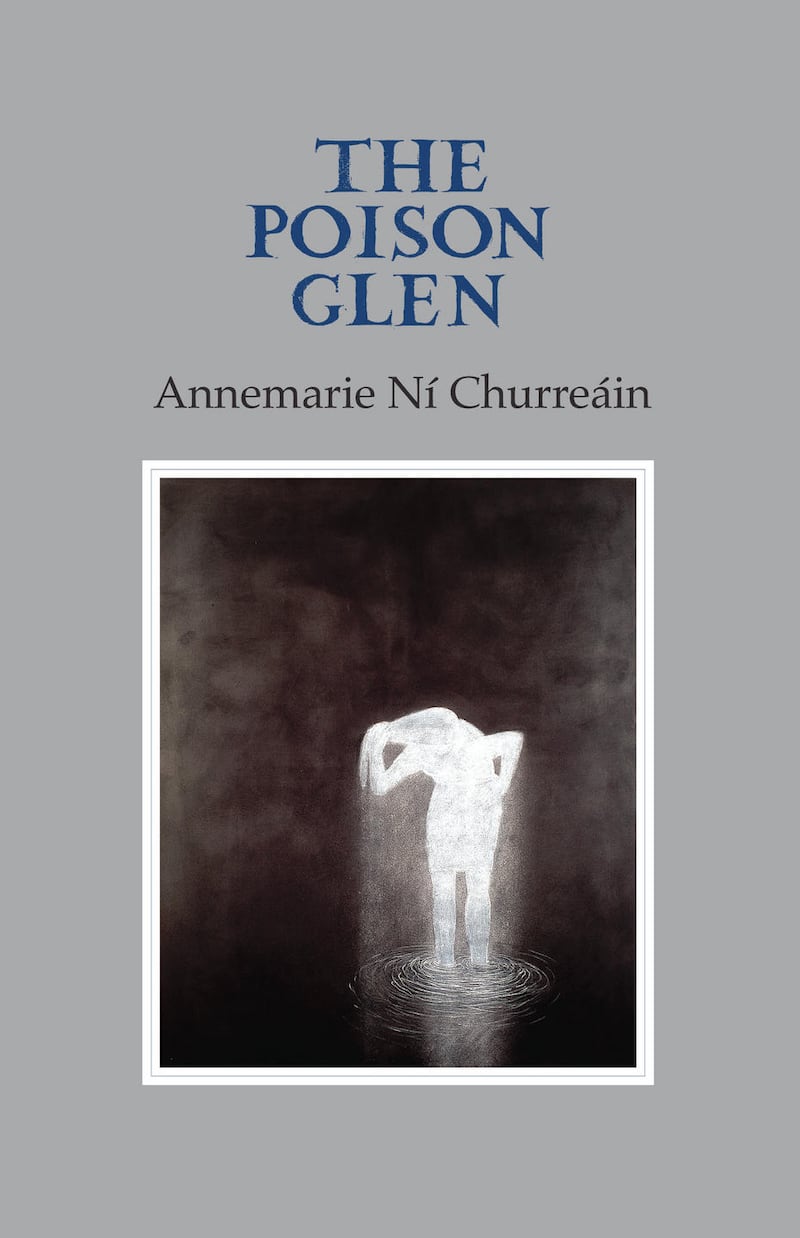What happens in a community when a child is stolen or goes missing? In northwest Donegal the question seems written among the heather and rocks of the landscape in which I grew up.
It’s an auspicious landscape in Irish mythology and much of it is associated with Balor of The Evil Eye, who locked his daughter Eithne into a tower on Tory Island and stole her three infant sons. According to popular retellings of this myth, Lugh, the only son to survive at the hands of his grandfather, returns from his fosterage as an adult to slay Balor by striking him in the eye and causing a poison to spill out through the surrounding glen.


In my new poetry collection The Poison Glen (The Gallery Press, 2021) I’ve interwoven parts of this story with fragments of Irish history and family autobiography to explore the theme of familial loss. It’s a theme that runs deep in the Irish psyche and one that first emerged for me during the writing of my debut collection, Bloodroot (Doire Press, 2017), with poems that reference the story of my paternal grandmother who gave birth in an unmarried Mother and Baby Home in the 1950s and who was forced to relinquish her child.
In The Poison Glen, I revisit this rupture but this time by looking at related and older histories of mother and child separation in Ireland. Where were children taken from their mothers sent? How did they grow up?
In looking at these questions I turned my focus back to the landscape and whilst reading the Report of the Commission to Inquire into Child Abuse 2009 (otherwise known as the Ryan Report), I earmarked several site maps. I began to think about the physical locations of church and state “care” institutions in Ireland over the past hundred years and beyond. What does the left-behind site of an institution remember? What sense of the child remains?
I set out on a pilgrimage to encounter some of these sites and among those that feature in my poems are the sites of St Conleth’s Reformatory School in Daingean, Offaly; St Joseph’s Orphanage in Dundalk; and St Joseph’s Industrial School in Letterfrack, Galway. But when, in the spring of 2020, a national Covid lockdown was announced, I found myself back in Dublin where I now live. It was an eerie, surreal time in the city and sitting at home one day in Mount Brown with a book titled The History and Heritage of St James’s Hospital, Dublin by Davis Coakley & Mary Coakley (Four Courts Press, 2018), I discovered that I was right next door to the site of the former Dublin Foundling Hospital of the 1700s (now part of St James’s Hospital campus). A landmark institution in its day, some estimates number the children who passed through this site as high as 200,000. Conditions were dire and during one particularly grim season it’s said that only one “foundling” survived.

As much as I believe in the search for a poem, it is also true that sometimes the poem will find you right where you are. Gazing up at the cranes overhanging the nearby building site of the New Children’s Hospital, I realised how the crane’s shape in the sky seemed to outline the old distaff and spindle crest of the Foundling Hospital. I took it as a sign and from there the writing took flight. The resulting 10-part poem, commissioned by Solstice Arts in Meath, is titled The Foundling Crib and it honours the real-life story of Bridget Kearney who managed to claim her child back from the hospital. It concludes with two lines in her memory “Together again./ Together again”.
Poetry begins, said Eavan Boland, “where certainty ends” and all throughout the writing of The Poison Glen there were revelations of a deeply personal kind. Perhaps most difficult of all was the discovery that I was still grieving the death of my foster brother “D” who died tragically at the age of 24. In his last messages to me “D” spoke of “the black hole in my life that can’t be filled”. It seems to me now that he was speaking of having been wronged as a child, of questions unanswered, of a legal system and a wider culture of care in Ireland that does not always bring justice or healing. Perhaps these poems are a way of speaking about violence and of saying to him “what happened to you is not forgotten”.
In piecing together The Poison Glen I held close the many stories shared with me by survivors of family separation in Ireland and in looking back over history I was compelled by the landscape before institutional trauma. What was Ireland like before Christianity? What was it like before colonisation? My attention was drawn to the ancient Brehon Laws, particularly the system of restorative justice, a system which seems to me to centre the voice of the victim in a way that is not always possible within the confines of our current judicial system.

Some of the questions a restorative justice approach might ask are: Who has been harmed? What needs to be done to repair the harm? Who should repair the harm? How might this be done? It was inspiring to spend time with the work of Dr Marie Keenan at UCD who is a restorative justice practitioner and social worker.
In structuring the poems of The Poison Glen, I decided to put the voices of my mythological family – Balor, Balor’s wife Kathleen, Lugh, Eithne and Eithne’s handmaid – into an imagined restorative justice circle and give each a turn to speak. What happened when I did this was totally unexpected, a new light started to come in.
Nuala Ní Dhomhnaill, one of the poets I admire most, once said of the word in Ireland that it offers “a plumb-line into the subconscious self”. For me poetry is often a way of digging, of excavating, of honouring back lost perspectives, including the perspectives of women. The Poison Glen is a story held together, at either end, by the losses and strengths of women and all throughout the writing I had the sense of the “mother-line” – that long line of Irish women with whom I share roots – looking over my shoulder, keeping me right.
Included among the poems are a series of safe-keeping charms rooted in pre-Christian Ireland and when artist Alice Maher granted use of her charcoal and chalk image Ankle Deep Woman (2001) for the book cover, it was a final puzzle piece slipped into place, encapsulating all the darklight intensity of the poems.
Gazing at this image, I was reminded of a common, everyday greeting used in northwest Donegal “bhuel, a chailleach!”. The cailleach is, of course, “the veiled one” or “witch and how soothing it is to know, after all that has happened in Ireland, that we are still greeting the divine feminine of Pagan Ireland in each other.
The Poison Glen closes with a poem created for Fanad Lighthouse in Donegal as part of The Lighthouse Project. Working alongside sound and film artist Laura Sheerin, I subverted a coastal tradition to create a poem titled A Blessing of the Boats by The Village Mothers. The book's last lines read "In the language of the mothers/ a tonn is both a wave and the whole ocean./ We keep the light for safe return".
Annemarie Ní Churreáin is a poet from the Donegal Gaeltacht. Her second full-length collection of poems, The Poison Glen, is published by The Gallery Press. From February 25th-27th, 2022 Annemarie will host the Solas Writers Retreat at The Song House, Donegal. More info studiotwentyfive.com
A Blessing of the Boats by the Village Mothers
at Fanad Lighthouse, County Donegal
Solas upon the hand, upon the wrist, upon the vein.
On this day of sailing, we must honour the gods.
Step, with your right foot first, into these boats
that we have stitched for you
from oxhide, hazel, sally rods and dirt.
With this wren's feather we bond you to light
and ask that you let go old grudges against
the barefoot sister, the red-haired sister,
the sister who rises up fish-tailed
between the rocks. Our motto is gather.
A babe hears first of all through bone and water,
the song of the mother before the mother
becomes, the song of the mother she dreams
to become. Take our dreaming as a torch.
Solas upon the nose, upon the lips, upon the tongue.
We rid your mouth of salt, of roses, of whistling.
We good-mouth your sailing. We set you off
knowing what we know: death is a mystery bell
tolling at the water's end; death is a cargo of gold
on a sinking ship, and a bird rising out of the wreck.
Solas upon the temple, upon the brow, upon the eyelids
of our loved ones who have been lost.
We close their mouths with light.
We light-wrap their bones. We prepare for them
a death-bed of willow, hand-woven.
See how the willow bends and yields,
how it folds, how it offers back, how it glows,
each blade a milk-fruit, each blade a peace-blade.
Who can know how the wave will turn? Or when
the wave will bolt? In the language of the mothers
a tonn is both a wave and the whole ocean.
We keep the light for safe return.











